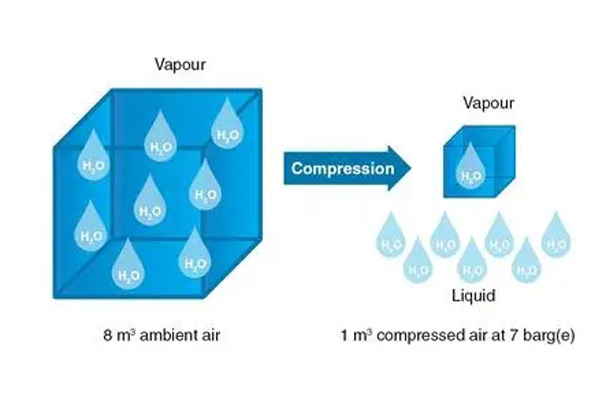The Importance of Pressure Dew Point
Untreated compressed air always contains contaminants due to the nature of the gas. The cleanliness of compressed air depends on three contaminants: moisture, dust and oil. Pressure dew point (PDP) is a very important indicator when measuring and controlling moisture content.
What is Pressure Dew Point (PDP)?
Pressure dew point (PDP) is the temperature at which water vapor in compressed air changes to liquid form (condenses). Water is incompressible, when air is compressed, the water content per cubic meter of air increases. At a certain temperature, the maximum water content per cubic meter of air is limited. Therefore, when the air is continuously compressed, liquid water will condense.

Having water in a compressed air system is never a good thing, and depending on the application, it can be disastrous. Large amounts of water can lead to the formation of bacteria or mold, and can also cause corrosion in plumbing systems and air tools. It can also cause moisture to get into the compressed air.
Food and beverage companies cannot use this air to package and protect food; pharmaceutical or medical companies cannot use humid air in hospitals or any medical applications; body shops cannot use compressed air containing water to paint vehicles as it will damage the product . In short, condensation can affect the reliability of an air system and the integrity of its products. This makes the ability to control the pressure dew point (PDP) an important measure of compressed air quality.
How to prevent compressed air from condensing into water?
To monitor PDP and keep the air dry, most compressed air systems use dryers to ensure gas quality. Dryers lower the dew point of compressed air, making it harder for steam to condense into water. The lower the PDP, the lower the water content in the compressed air, which ensures that the air is dry and free from corrosion and bacteria.